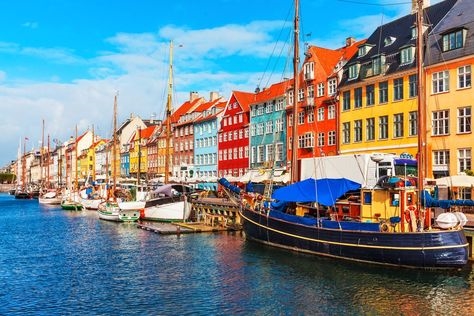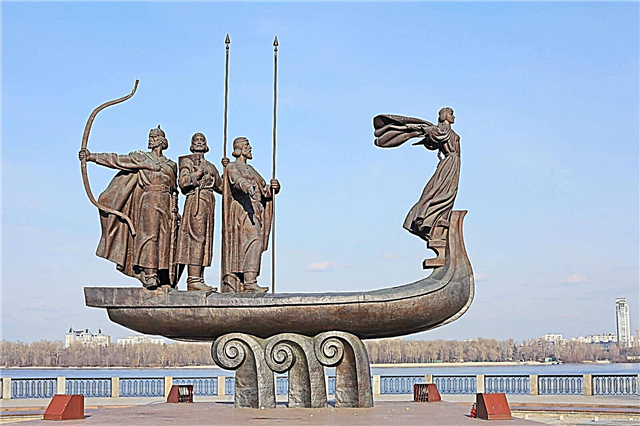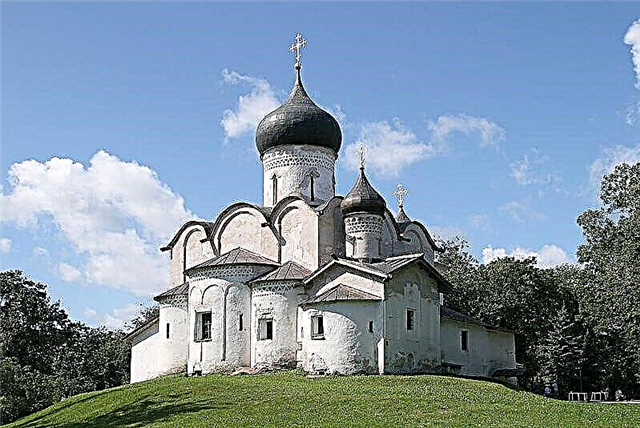Pskov is distinguished by a large number of ancient temples, some of which were built even before the Tatar-Mongol invasion. These are unique architectural monuments, which, with rare exceptions, are included in the federal list of cultural objects. On July 7, 2019, many Pskov churches were included in the UNESCO World Cultural Heritage List.
The Pskov school of church architecture was formed separately from the Moscow one. This is due to the fact that an independent Pskov republic existed for a long time. Therefore, the churches have characteristic distinctive features - a building made of white limestone of local origin, a one-domed structure, embedded "voices". It is this uniqueness that allows you to fully experience the atmosphere of ancient Pskov by visiting its temples.
Operating churches and cathedrals of Pskov
List of the most famous and popular temples in the city.
Holy Trinity Cathedral
This is the cathedral of the Pskov diocese, built in 1699. The cathedral in its current form is the fourth in a row, which was built on this site. The first Holy Trinity Cathedral appeared during the time of Princess Olga in the 10th century. The building is designed in the traditions of Moscow architecture of the 18th century. The church houses icons and relics revered in Orthodoxy, including a part of the Protection of the Mother of God. Nikita Salos is buried in the basement of the cathedral, who, according to legend, saved the city from the troops of Ivan the Terrible.
Address: Pskov, st. Kremlin, 2/1
Website: www.soborpskov.ru

Church of St. Alexander Nevsky
A military temple built at the beginning of the 20th century. Included in the list of cultural heritage sites of regional significance. After the revolution, the building housed the Officers' House and the Military Medical Warehouse. Now the temple has been restored, and in 2008 new bells were placed on the bell tower, each of which weighs about a ton.
Address: Mirnaya, 1
Website: pskov.pobeda.ru

Church of St. Basil the Great
The church was built in the years 1413-1415. This is a unique building, which in architectural terms is a mixture of the Novgorod, Pskov and Moscow schools of architecture. The temple is protected by the state as an object of cultural heritage of federal significance. It contains the Tikhvin icon of the Mother of God, revered in Orthodoxy as a miraculous one.
Address: Pskov, Oktyabrsky Avenue, 5
Website: hramnagorke.ru

Cathedral of John the Baptist
This is an old temple built in the 13th century. It is included in the list of UNESCO World Cultural Heritage Sites, and the federal list of architectural monuments. The cathedral is one of the few surviving examples of pre-Mongol architecture. For several centuries, the cathedral served as a burial vault for the Pskov princesses. Near the temple there is an observation deck with a view of the Pskov Kremlin.
Address: Maxim Gorky, 1 A

Church of the Intercession and the Nativity of the Virgin from Prolom
The church is an architectural monument of federal significance. The building dates back to the XV-XVI centuries, and is a vivid example of the temples of the Pskov architectural school. The name of the temple is associated with the "break" of the fortress wall during the siege of Pskov by the troops of Stefan Batory. In 2019, the church was included in the UNESCO World Heritage List.
Address: Sverdlova, 1
Website: hramotproloma.org.ru

Church of the Assumption from the Ferry
This temple is mentioned in the chronicles as early as 1444, but rebuilt in the form in which it exists now, in 1524. Its freestanding belfry has survived only in a few churches of this period of construction. During the Soviet period, the church was taken under state protection as a unique architectural monument. The temple is included in the list of UNESCO World Heritage Sites and the list of architectural sites of federal significance.
Address: Pskov, Rizhsky prospect, 3
Website: vk.com/hram.uspeniya.s.paromenia

Church of Michael and Gabriel Archangels from Gorodets
It is also one of the oldest temples of the Pskov architectural school - the temple was founded in 1339. Due to its hipped roof, it is referred to as the “Church of Michael the Archangel with the White Tower”. The prefix "from Gorodets" refers to the part of the city where the temple is located. Previously, there was a site enclosed by fortress walls - "Gorodets".
Address: Sovetskaya, 18
Website: vk.com/hramarhangelov

Church of the Epiphany from Zapskovye
The temple was first mentioned in the chronicle in 1397, but in the form in which it has survived to this day, it was built in 1495-1496. It is distinguished by a four-span belfry - one of the few surviving freestanding temple belfries. In 2019, the church was included in the list of UNESCO cultural heritage sites, as an example of a temple of the Pskov architectural school.
Address: Herzen, 7

Church of the Assumption of the Blessed Virgin Mary from Polonische
Initially, this temple was built in the 15th century, but in the 19th century it was restored at the expense of A. Shishkova, the grandmother of the famous Decembrist M.A.Nazimov. Since then, the architectural appearance of the church has acquired the features of late classicism. The white-azure scale in which the temple is decorated gives it grace and lightness. A freestanding bell tower is located nearby. In 2002, new bells were placed on it.
Address: Georgievskaya, 3 A
Site: vk.com/club168106192

Church of Elijah the Prophet the Wet
The temple was built as a monastery, for the Ilyinsky monastery. At the end of the 18th century, it was rebuilt, and even later a two-tiered bell tower was added. The name "Church of Ilya the Wet" comes from the fact that there are two Ilyinsky churches in Pskov. In the temple of Elijah the Prophet Sukhoi, which has not survived to this day, they prayed for warm and dry weather. And in the temple of Ilya the Wet they asked for rain in a dry summer.
Address: Volkova, 9 A

Church of St. Nicholas from Usohi
The temple was founded in 1535 on the site of a dried-up swamp - hence the name "from Usohi". Previously, it was the second highest Pskov temple after the Holy Trinity Cathedral. However, due to the growth of the cultural layer, the church "sank" into the ground. The church is included in the list of cultural heritage sites of UNESCO and the list of cultural sites of federal significance.
Address: Sovetskaya, 19

Spaso-Preobrazhensky Cathedral of the Mirozh Monastery
This is one of the oldest Russian churches. It was built in the 1st half of the 12th century following the example of Byzantine churches. From the inside, the temple is painted with highly artistic frescoes that occupy the entire area from the floor to the under-dome space. The authors of the frescoes are supposedly from Greece and Byzantium. The frescoes were partially restored by Vladimir icon painters. On July 7, 2019, the temple was included in the UNESCO World Heritage List.
Address: Pskov, Mirozhskaya embankment, 2
Site: mirozhsky-monastery.ru

Church of Peter and Paul from Bui
The temple was originally built in 1373, but in its current form it was erected only in the 16th century. However, the old wall paintings and the two-tiered bell tower have not survived to this day. According to legend, during the Northern War, Peter I visited the church, and even read "The Apostle" in the kliros. Since 1960, the building has been protected by the state as a unique architectural monument. Now it is undergoing restoration work.
Address: Karl Marx, 2

Church of Faith, Hope, Love and their mother Sophia
The temple was founded in 2008. The construction was supposed to be completed by 2010, since the opening of the church was to be timed to coincide with the 500th anniversary of the entry of the Pskov principality into a single Russian state. But since the project was reworked many times, the temple was consecrated only in 2012. The carved oak iconostasis of the church was made by hand. Its height is 7 meters.
Address: Pskov, Leningradskoe shosse, 24 V / 1
Site: vk.com/club25346480

Church of St. George from Vzvoz
The church was built in 1494, during the existence of the independent Pskov republic, and keeps the traditions of the Pskov architectural school. Particularly noteworthy is the drum of the temple, decorated with tiles with images of people, mythological animals, and birds. The name "from Vzvoz" comes from the Vzvoz gate, near which the temple was built. The building is protected by UNESCO.
Address: Georgievskaya, 1
Site: vk.com/georgysovzvozapskov

Church of Kosma and Damian from Primostia
The stone temple was founded in 1462, but even earlier in its place there was another, destroyed by fire. The belfry that stood separately has not survived. The unique tiles that adorned the church were broken off during the occupation during the Great Patriotic War. At the same time, the carved iconostasis also perished. The temple is under state protection, and work is underway to restore it.
Address: L. Pozemsky, 7

Church of the Old Ascension
The first mention of a wooden church on the site of the stone Starovoznesenskaya church dates back to 1420. But after that the temple was rebuilt several times. It served as a traditional meeting place for distinguished guests of the city from the second half of the 15th century. The church was taken under state protection in 1960, and in 1960-1969 it was restored while preserving the peculiarities of Pskov architecture. Now it is included in the list of architectural monuments of federal and world significance.
Address: Sovetskaya, 64 A
Website: vk.com/starovoznesenie

Church of the Myrrh-Bearing Women
The stone temple was built in 1546. Neither the detached belfry nor the chapel attached to it have survived to this day. From the original building, only the protruding part (apse) with built-in "voices" remained - this was the name of the embedded vessels that served to amplify the sound in the temple. The temple was restored in the 1950s. The building is protected by the state and UNESCO.
Address: Kommunalnaya, 25 A
Site: vk.com/club62230046

Church of Saints Equal to the Apostles Constantine and Helena
According to the inscription on one of the oldest church icons, the church was built at the end of the 17th century. According to legend, the iconostasis was moved here from the Nikitskaya Church, and this was done by Prince Dovmont, who is canonized in Orthodoxy. Later, in the 19th century, a two-tiered belfry was built. The temple attracts attention with its design in white, blue and green colors, which creates a feeling of lightness and tranquility.
Address: Krasnogorskaya, 26

Church of Varlaam Khutynsky on Zvanitsa
The temple is included in the federal list of architectural monuments. A stone church on the site of a previously standing wooden church was erected at the end of the 15th and beginning of the 16th century. Now the temple has been rebuilt after a long desolation. Bells with a total weight of about 900 kg are raised on the bell tower. Seven bells were cast in honor of the family of Nicholas II - the names of members of the royal family are engraved on them.
Address: Leon Pozemsky, 53

Church of St. Nicholas the Appeared from the Bargaining
In its present form, the temple was erected in 1676. The layout bears a rare phenomenon for Russian churches - the heads of the church are not traditionally located in the corners, but oriented to the cardinal points. After the 1917 revolution, the temple housed a warehouse, and, judging by the remains, the church premises were the site of executions. Since 2000, the church has been restored and included in the list of architectural monuments of the Russian Federation.
Address: Nekrasov, 35

Church of the Holy Great Martyr Anastasia Uzoreshitelnitsa
Wooden church in the name of St. Anastasia was erected in 1487 as a "vowed" temple during one of the epidemics raging in Pskov. According to legend, the construction took only one day. In the 16th century, a stone church was already built in its place. The temple is a vivid example of the Pskov temple architecture. In 1960, he was included in the list of architectural objects protected by the state.
Address: Pskov, October Avenue, 9
Site: anastasia-psk.ru

Cathedral of the Nativity of the Virgin of the Snetogorsk Monastery
This temple is known primarily for its frescoes. The unique wall painting is the only surviving example of the Pskov art school and ancient Russian monumental painting. The cathedral was built in 1313, after a long break in Russian church architecture, which was caused by the Tatar-Mongol invasion. Included in the UNESCO World Heritage List.
Address: Snyatnaya Gora, 1
Site: snetogor.ru

Church of the Pentecostal Precipitation
The church was built in 1494. Its belfry has not survived to this day - it was rebuilt and turned into a hipped bell tower in the 19th century. The appearance of the temple is distinguished by free space inside - there are no internal pillars, and an abundance of light. During the Soviet period, the temple was given over to a smithy. Now it is protected by the state as a cultural object of federal significance.
Address: Detskaya, 3

Church of St. Alexei
The temple was first mentioned in the 16th century. Then it was the wooden church of the Alekseevsky monastery. The stone building was built in 1688. The appearance of the temple is typical for the Pskov architectural school - a one-domed church without internal pillars. Above the entrance is a bell tower, built in the 18th century. Since 1994, the temple has been operating again after a long desolation.
Address: Sovetskaya, 100

Church of the Resurrection of Christ from the Stadishche
It is an architectural monument of the 16th century of federal significance. Initially, the temple was built for the Resurrection Monastery, but later became an ordinary parish church. The layout includes a phenomenon, atypical for Pskov architecture, - suspended arches. According to the urban legend, one of the underground passages of Pskov passes under the building. The temple was restored at the beginning of the XXI century.
Address: Nabat, 4 A
Website: vk.com/hram.voskresenia

Church of St. Sergius of Zaluzhia
The name of the temple comes from the area where it is located - a swamp was called a "puddle". A church was built for the Sergievsky monastery in the 16th century. The temple was badly dilapidated by the 19th century - then the question of its demolition was raised. During the Great Patriotic War, the “head” of the temple was lost. Now the building is under state protection as an object of cultural heritage of federal significance. The temple has been restored, services are being conducted in it.
Address: Sverdlova, 42 A
Website: vk.com/sergiyszaluzhya

Church of St. Nicholas from the Stone Wall
This is an Old Believer temple of the Pomor Consent, built in the 16th century. The temple was destroyed many times due to its location outside the city walls. But the main features of its appearance were preserved even after the rebuilding - it is a small temple of a pillarless type. The church contains icons of ancient work, and old-believers cast crosses of the 19th century.
Address: Rosa Luxemburg, 17 A

Church of the New Ascension
The temple was built in 1373-1375, but in later periods it was rebuilt so that only the belfry and the narthex have survived from the old building. The artist and restorer Igor Grabar highly appreciated the design of the belfry, speaking of the amazing harmony of its proportions. Now the church is undergoing reconstruction work, and the funds of the Pskov Museum-Reserve are kept.
Address: Nekrasov, 20

Obrazskaya Church with Toad Lavitsa
The name of the temple comes from the nickname of a small swamp, next to which it was located. The first mention of the church dates back to the 16th century. Now the temple is taken under state protection as a monument of federal significance. In the interior decoration, the temple floor stands out - it is made of ceramic tiles of various shapes and shades. The floor has no analogues among the buildings of this period.
Address: Pervomayskaya, 27












